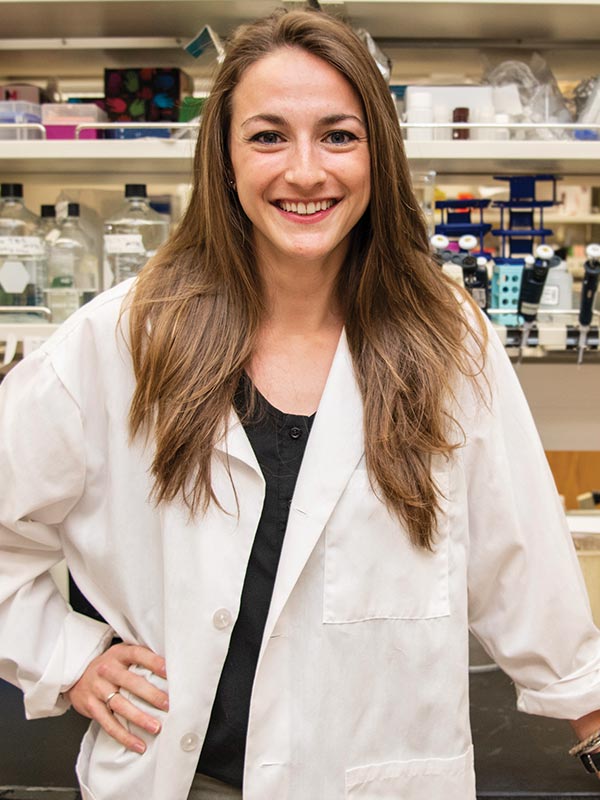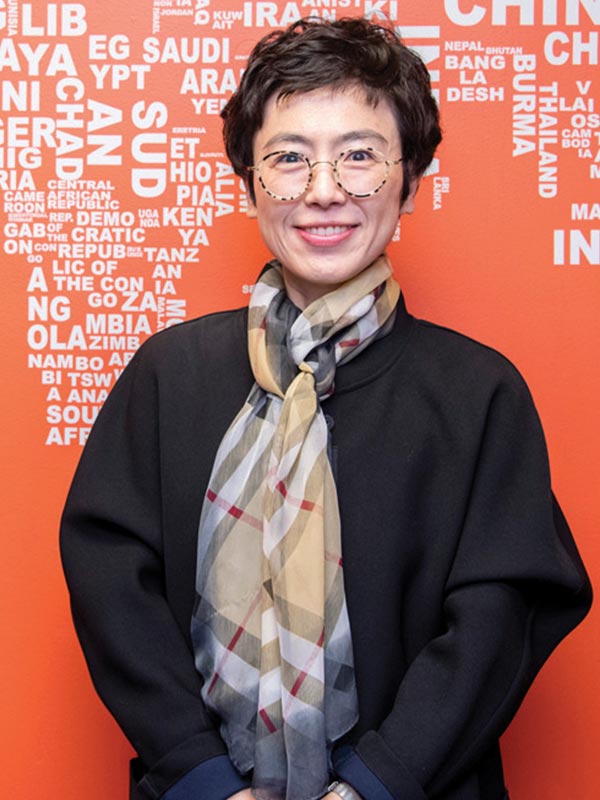College of Human Sciences researchers work to improve quality of life for all
Article body
Life-threatening metabolic disease. Emerging technology with hidden health risks. Wasting apparel in the world’s landfills. For the issues that affect well-being at home and around the world, human scientists are researching practical solutions to solve these problems and more.
In the College of Human Sciences, the studies of global issues, consumer and design science, human development, family, hospitality and nutrition all work toward the same mission: to improve quality of life for all.
Unlocking the Mysteries of Alzheimer’s with Nutrition
Alzheimer’s disease disrupts millions of lives around the world every year, according to the 2018 World Alzheimer’s Report, but both the cause and cure to the disease remain a mystery to the medical field.
A promising avenue of research is the topic of meal-timing, which nutrition doctoral student Lauren Woodie studies in the lab of associate professor of nutrition Dr. Mike Greene. The meal-timing principle explains how the time of day in which people consume food affects their metabolism. For example, eating very late at night may slow your nutrient uptake and lead to negative health effects.
Circadian rhythm is the schedule by which the body’s internal clock is set. This rhythm keeps the pace in organs such as the liver, where the genes of the internal clock are regulated by nutrients and synchronized by the central clock in the brain. Researchers were surprised to find the hippocampus, the brain’s center of memory, behaves in a similar fashion. So, the same principle applies—an irregular eating schedule or poor diet may have serious, lasting effects on memory.
“When those two clocks are not working together, metabolic disruptions will happen. One clock remains set to the light, the other becomes set to food. A high-fat diet will disrupt the food regulated clock, and then you have this desynchronization, which is part of the development of metabolic diseases,” Woodie said. “Given the fact that the diet has such a big impact on the hippocampus and that circadian disruptions are a big part of Alzheimer’s disease, looking to see if Western diet-induced circadian disruptions can modulate some of the Alzheimer’s disease risk genes is a major addition to the field.”
With her results, further research will reveal more about the probability of when you eat as a possible treatment of Alzheimer’s.
Investigating the Health Risks of Vaping
Vaping and e-cigarette technology are growing in popularity among students and the general public. Human Development and Family Studies associate professor and Alabama Extension specialist Dr. Adrienne Duke said there’s a broad misunderstanding about the health risks these vapor-based nicotine delivery systems pose.
Duke and Dr. Linda Gibson-Young in the School of Nursing examine adolescent and college-aged students’ vaping use, beliefs, behaviors and health outcomes. Duke said not only are higher rates of college students vaping than previously thought, but a majority believe that electronic nicotine delivery devices are relatively harmless.
“Teens and young adults often don’t understand what nicotine can do to the body and brain. If youth understood better that they are breathing in an aerosol of nicotine, ultra-fine particles, volatile organic compounds and other toxins, they would be less likely to say that it’s harmless,” Duke said. “Addiction to nicotine at an early age has effects on brain development and can lead to lung damage and respiratory illnesses.”
The scientific community recently named this infection EVALI, or e-cigarette or vaping product use associated lung injury. As this pool of research grows, it will serve to inform policy-makers and federal regulation offices about how to restrict the use of these relatively new products.
As an Alabama Extension specialist, Duke is evaluating a vaping prevention program called Escape Vapes, led by Extension’s Family and Child Development educators across the state of Alabama. This prevention program is targeted toward middle and high school students, and assesses the changes in attitude about vaping. Duke said this type of education will reduce the number of people smoking, as well as those who try it for the first time.
Creating Sustainable Apparel
Today’s dress shoes are most commonly made from a variety of rubber, leather and synthetic materials that contribute to environmental deterioration and have negative effects on industry workers’ health. In response to this problem, Auburn University consumer and design sciences associate professor Dr. Young-A Lee and her research team developed a promising biodegradable material alternative to leather using the byproducts of fermented green tea through an Environmental Protection Agency-funded grant.
In her research at Iowa State University, Lee found that a green tea-based cellulosic material behaved the same way as leather, without the same negative environmental side effects. When the researchers combined an outer shell of cellulosic material with a hemp-based fabric on the inside, then used recycled denim to bond the two together, the result was an eco-friendly product comparable to the style and durability of a leather dress shoe.
The study concluded that the multilayered, biodegradable material presented great potential as a substitute to leather. These findings will inform future explorations into sustainable apparel and footwear practices in the industry.
“Fashion, to most people, is an ephemeral expression of culture, art and technology manifesting itself in form,” Lee said. “Fashion companies keep producing new materials and clothing, from season to season, year to year, to fulfill consumers' desire and needs. This is really the time to think about where these items eventually go. We really need to think about new ways of creating sustainable materials and products made out of those materials, which contributes to the betterment of people, the planet and our society.”
Auburn University is a nationally ranked land grant institution recognized for its commitment to world-class scholarship, interdisciplinary research with an elite, top-tier Carnegie R1 classification and an undergraduate education experience second to none. Auburn is home to more than 30,000 students, and its faculty and research partners collaborate to develop and deliver meaningful scholarship, science and technology-based advancements that meet pressing regional, national and global needs. Auburn's commitment to active student engagement, professional success and public/private partnership drives a growing reputation for outreach and extension that delivers broad economic, health and societal impact. Auburn's mission to educate, discover and collaborate drives its expanding impact on the world.




